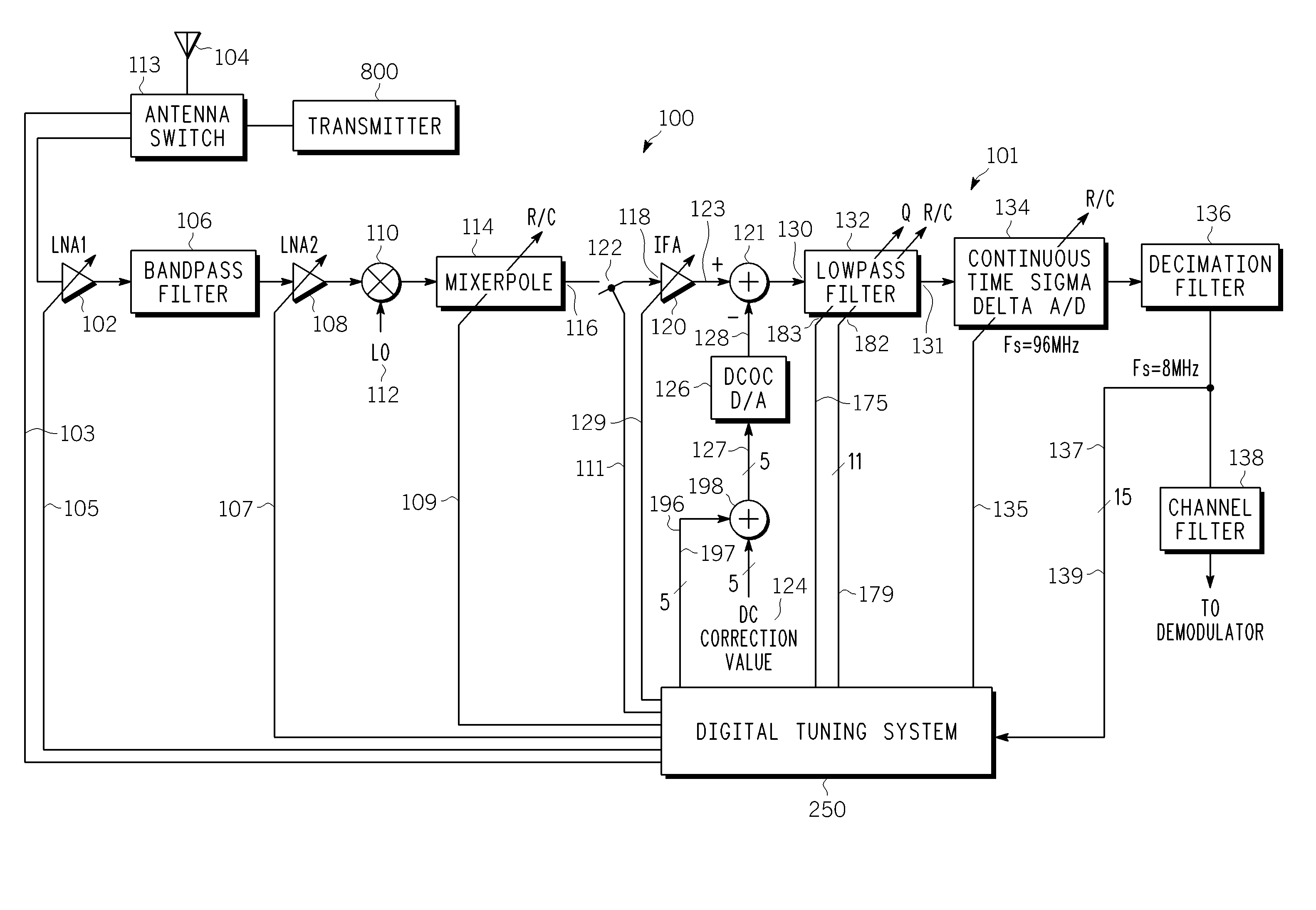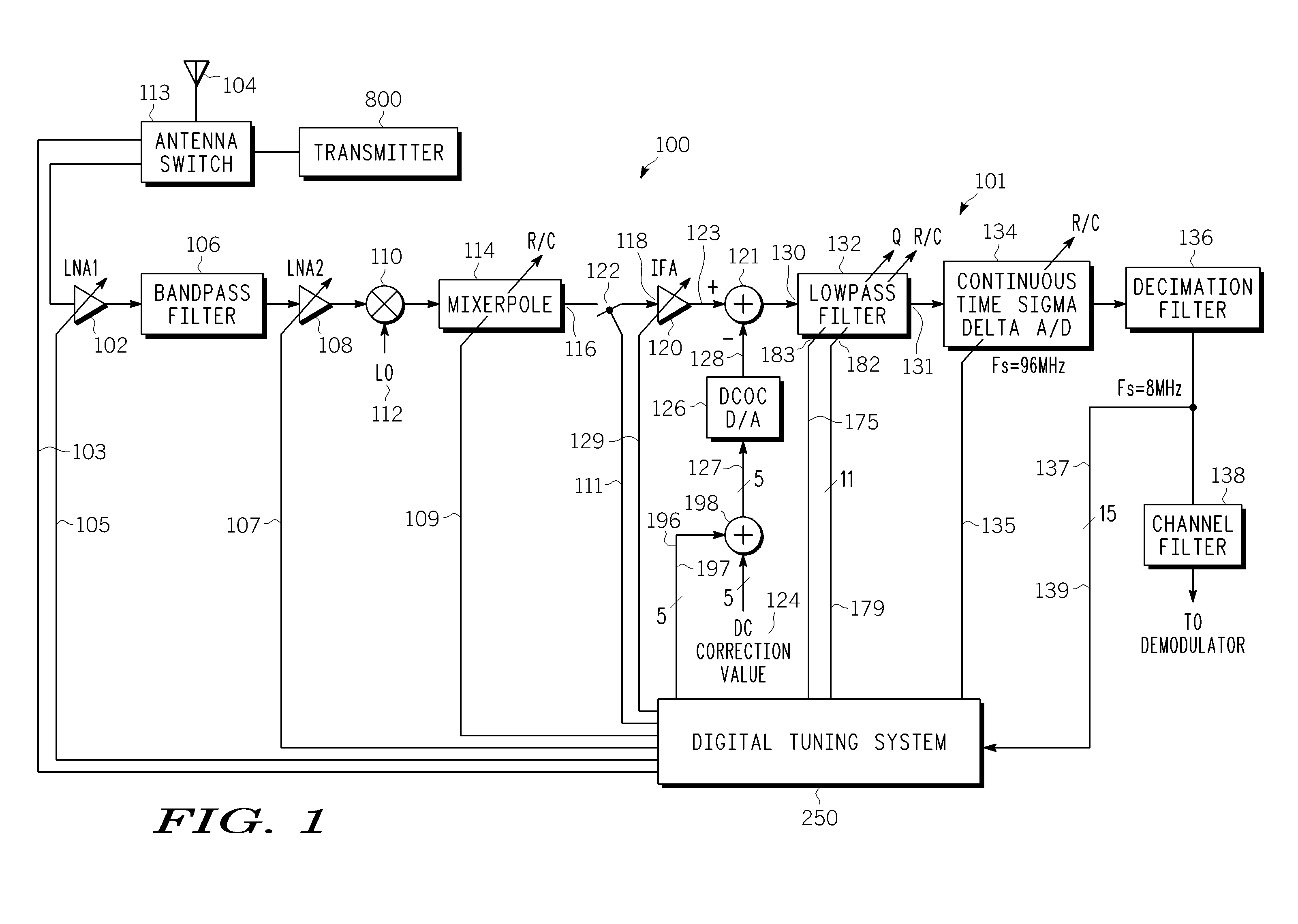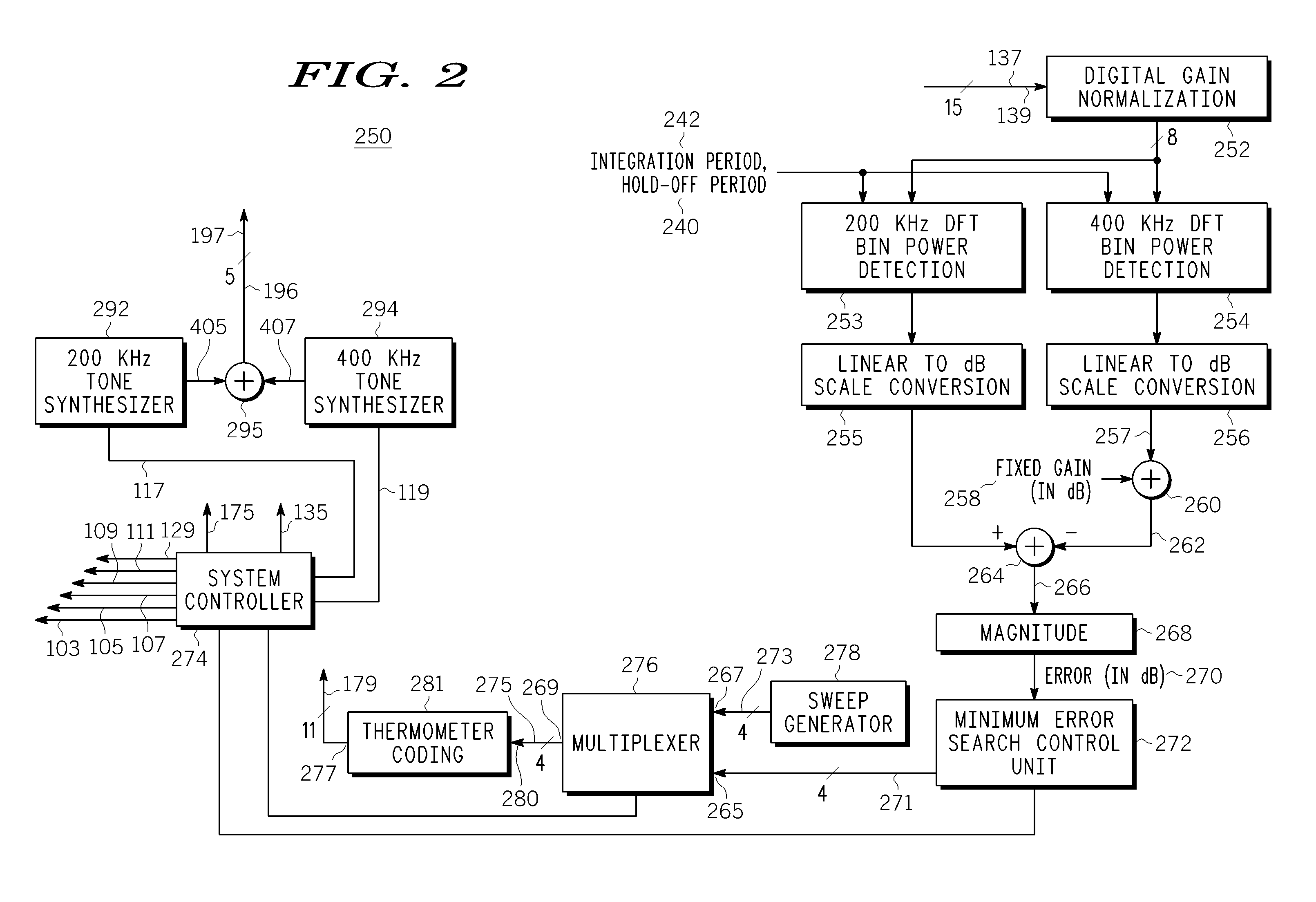Controlling the bandwidth of an analog filter
a bandwidth control and analog filter technology, applied in the field of analog filters, can solve the problems of static/transient power mask performance, static sensitivity, sensitivity, adjacent channel leakage ratio,
- Summary
- Abstract
- Description
- Claims
- Application Information
AI Technical Summary
Problems solved by technology
Method used
Image
Examples
Embodiment Construction
[0020]FIG. 1 is a simplified functional block diagram of a transceiver 100, including a portion of a zero-IF, or baseband, receiver 101. In an exemplary embodiment, the transceiver 100 is a mobile, or wireless, telephone. The receiver 101 includes a first low noise amplifier (LNA) 102 coupled to an antenna 104 through an antenna switch 113, a bandpass filter 106 coupled to the first LNA, a second LNA 108 coupled to the bandpass filter, a mixer 110 coupled to a local oscillator 112 and to the second LNA, and a mixer pole 114 coupled to the mixer. The mixer pole 114 has an output 116 that is coupled to an input 118 of a baseband, or intermediate frequency, amplifier (IFA) 120 via a switch 122. The IFA 120 has an output 123. A digital DC correction value 124 is inserted into an input of a DC offset correction (DCOC) digital-to-analog (D / A) converter 126 via a five-bit coupling 127. The output signal of the DCOC D / A converter 126 is a dcoc_dac_out 128. As more fully explained hereinbelo...
PUM
 Login to View More
Login to View More Abstract
Description
Claims
Application Information
 Login to View More
Login to View More - R&D
- Intellectual Property
- Life Sciences
- Materials
- Tech Scout
- Unparalleled Data Quality
- Higher Quality Content
- 60% Fewer Hallucinations
Browse by: Latest US Patents, China's latest patents, Technical Efficacy Thesaurus, Application Domain, Technology Topic, Popular Technical Reports.
© 2025 PatSnap. All rights reserved.Legal|Privacy policy|Modern Slavery Act Transparency Statement|Sitemap|About US| Contact US: help@patsnap.com



